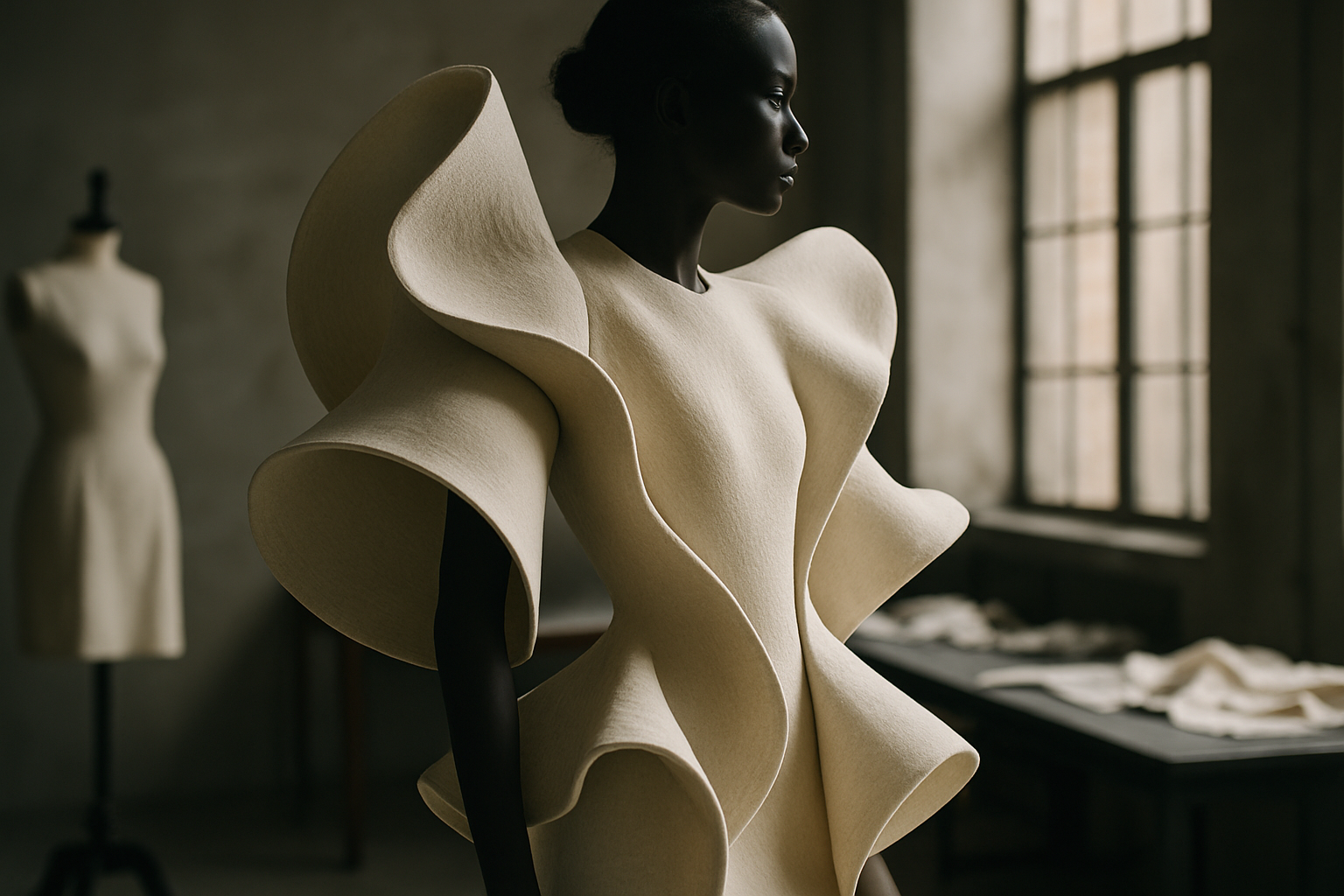Sculptural Minimalism: The Art of Architectural Fashion
Introduction: In a world of fleeting trends and fast fashion, a new movement is taking shape—literally. Sculptural minimalism is redefining the boundaries between fashion and architecture, creating garments that are as much works of art as they are wearable pieces. This avant-garde approach to design is captivating fashion enthusiasts and challenging our perceptions of clothing's form and function.

The Intersection of Fashion and Architecture
At its core, sculptural minimalism treats clothing as a three-dimensional form, much like a building or sculpture. Designers working in this style often have backgrounds in architecture or industrial design, bringing a unique perspective to garment construction. They prioritize shape and silhouette over embellishment, using innovative cutting techniques and rigid fabrics to create pieces that hold their form independent of the wearer’s body.
Materials and Techniques
The success of sculptural minimalist designs often hinges on the materials used. Designers favor fabrics with structure and body, such as heavy wool, neoprene, and specially treated cottons. These materials allow for the creation of sharp angles, dramatic folds, and voluminous shapes that define the aesthetic. Advanced techniques like 3D printing and laser cutting are also employed to achieve precise, architectural forms that would be impossible with traditional tailoring methods.
The Appeal of Architectural Silhouettes
Despite its avant-garde nature, sculptural minimalism has found a growing audience among fashion-forward consumers. The appeal lies in the garments’ ability to make a statement through form alone, without relying on patterns or embellishments. These pieces often become the focal point of an outfit, allowing wearers to create striking looks with minimal effort. The style’s emphasis on clean lines and neutral colors also aligns with the broader trend towards minimalism in fashion and lifestyle.
Wearability and Practicality
One of the challenges of sculptural minimalism is balancing artistic vision with wearability. While some pieces are purely conceptual, many designers are finding ways to incorporate architectural elements into more practical garments. This might involve adding structural details to classic pieces like blazers or dresses, or creating convertible designs that can be worn in multiple ways. The key is to strike a balance between form and function, creating pieces that are both visually striking and comfortable to wear.
Influence on Mainstream Fashion
While sculptural minimalism remains a niche style, its influence can be seen in more mainstream fashion trends. Elements of architectural design are appearing in ready-to-wear collections, from exaggerated shoulder pads to asymmetrical hemlines. This trickle-down effect demonstrates the style’s growing impact on the broader fashion industry and suggests that we may see more sculptural elements in everyday wear in the coming seasons.
Styling Sculptural Pieces: A Guide to Architectural Fashion
-
Start with a statement piece: Choose one sculptural item as the focal point of your outfit
-
Keep accessories minimal: Let the architectural elements speak for themselves
-
Balance proportions: Pair voluminous pieces with more fitted items to create harmony
-
Experiment with layering: Use sculptural pieces to create interesting silhouettes
-
Consider your environment: Be mindful of practicality when wearing more avant-garde designs
-
Play with contrast: Mix sculptural pieces with softer, more fluid items for an interesting juxtaposition
As fashion continues to evolve, sculptural minimalism stands out as a bold and innovative direction. By blurring the lines between clothing and art, this style challenges us to reconsider our relationship with what we wear. Whether embraced in its purest form or incorporated as subtle details, architectural fashion offers a fresh perspective in a world of endless trends. As consumers become more discerning and sustainability concerns grow, the thoughtful, timeless nature of sculptural minimalism may well position it as a significant influence on the future of fashion design.




